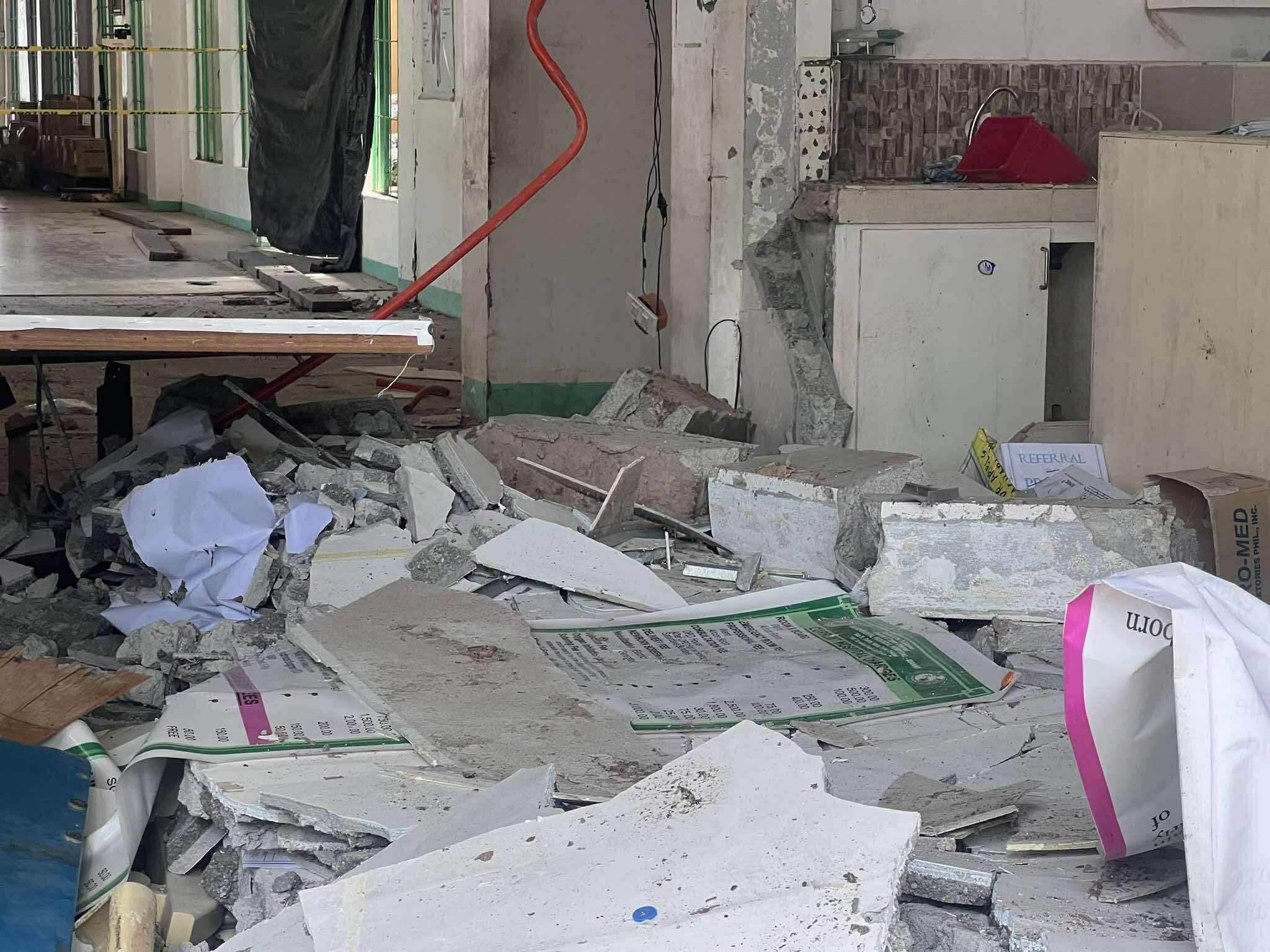
By Brian Campued
On Friday morning, at 9:43 a.m., a magnitude 7.4 earthquake struck Manay, Davao Oriental—about nine hours later, at 7:12 p.m., another temblor jolted the town, this time with a magnitude of 6.8. State seismologists call this phenomenon a “doublet”.
According to the Philippine Institute of Volcanology and Seismology (Phivolcs), a doublet refers to distinct or different earthquakes in almost the same area with the main shocks having slight differences in magnitude.
The twin major tremors in Davao Oriental are distinct earthquakes and not an aftershock of the other, Phivolcs Director, Dr. Teresito Bacolcol said in a press conference. “These are two closely timed earthquakes happening nearby.”
Based on historical data, Bacolol added, there have been doublet earthquake events recorded in the country that were produced by the movement in the Philippine Trench—with the most recent in 2023, when a magnitude 7.4 earthquake that occurred in Hinatuan, Surigao del Sur on Dec. 2 was followed by a magnitude 6.8 event two days later on Dec. 4.
In Manay, Davao Oriental, a doublet was also recorded on May 17, 1992. The magnitudes 7.1 and 7.5 earthquakes occurred around 26 minutes apart and were located 20 km from each other.
Foreshock vs. aftershock
When asked if the doublet earthquake could trigger a stronger earthquake in the region, Bacolcol explained that an earthquake cannot be identified as a foreshock until after a larger earthquake in the same area occurs.
He cited the magnitude 9 earthquake in Japan on March 11, 2011, which was preceded by several foreshocks with magnitude 7.
“‘Yung determination of a foreshock is always on the hindsight. Hindi po natin masasabi na—okay foreshock ito ngayon and then we will anticipate for a bigger event,” he stressed.
While foreshocks precede stronger earthquakes, aftershocks occur after the main shock and are usually one magnitude lower.
During the same press conference, Dr. Winchelle Sevilla, chief of Phivolcs’ Seismological Observation and Earthquake Prediction Division, said that aftershocks from the Davao Oriental quakes would be counted as one because it would be difficult to distinguish which aftershocks were produced by which earthquake event due to their proximity.
Sevilla also explained that all aftershocks were counted based on seismic records from Phivolcs’ reference stations across the country, such as the one in Mati City, Davao Oriental.
From these recorded aftershocks, some can be plotted or located. Information on these events would then be uploaded on the website of Phivolcs, under the earthquake information tab.
“Ito po ‘yung may locations siya, may enough information para ma-locate [kung] saan nag-occur. ‘Yan po yung nakalista sa ating website,” Sevilla said.
As of 11:00 a.m. on Saturday, a total of 831 aftershocks have been recorded by Phivolcs from the doublet Davao Oriental quakes. Of this number, 349 were plotted while 13 were felt.
The magnitudes of the aftershocks ranged from as low as 1.2 to as high as 5.8.
Aftershocks may continue to occur for several days and weeks, but will gradually decrease in number.
Fault vs. trench
Meanwhile, Bacolcol clarified that the Davao Oriental quakes are not related to the magnitude 6.9 earthquake that jolted Bogo City, Cebu on Sept. 30 and the magnitude 4.4 earthquake that struck Pugo, La Union on Oct. 9.
He noted that the earthquakes in Davao Oriental were caused by the Philippine Trench while the earthquake in Cebu was generated by the Bogo Bay Fault, a newly identified active fault in the province.
The Philippines has about 180 active fault segments and six trenches across the country, all of which can generate powerful earthquakes.
Bacolcol said the main difference between a fault and a trench is their location, “A fault can also be offshore or onshore but a trench is always nasa dagat.”
“Ang fault ay bitak sa lupa kung saan ang dalawang malalaking piraso ng bato ay either nagbabanggaan or they slide past each other,” he explained.
“Ang trench, on the other hand, ay nasa ilalim ng dagat, and it forms when an ocean floor slides past a plate,” he added, noting that the Davao Oriental earthquakes were produced when the Philippine Sea plate slid past the Philippine Trench.
A fault is also located close to the surface, resulting in stronger shaking felt by the public. The 6.9-magnitude earthquake in Cebu resulted in Intensity VII or described as “destructive” based on the Phivolcs earthquake intensity scale (PEIS).
A trench, meanwhile, is longer in length and is composed of several segments that are capable of generating earthquakes with higher magnitudes.
-jpv
